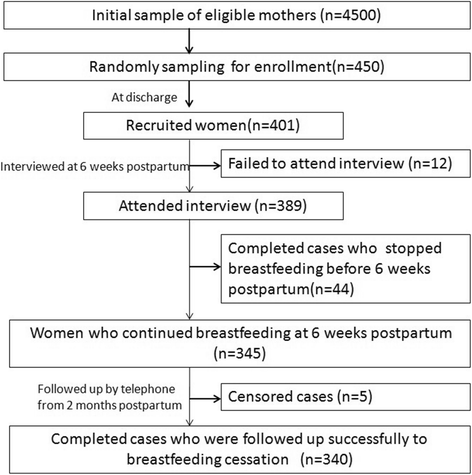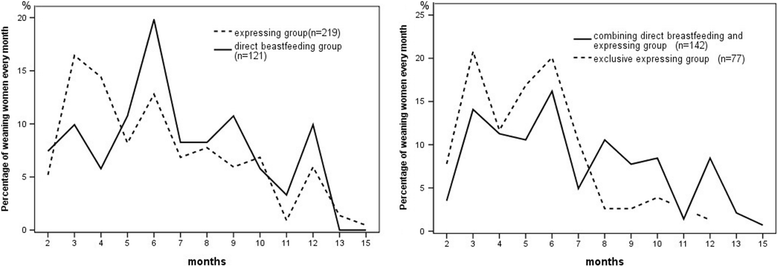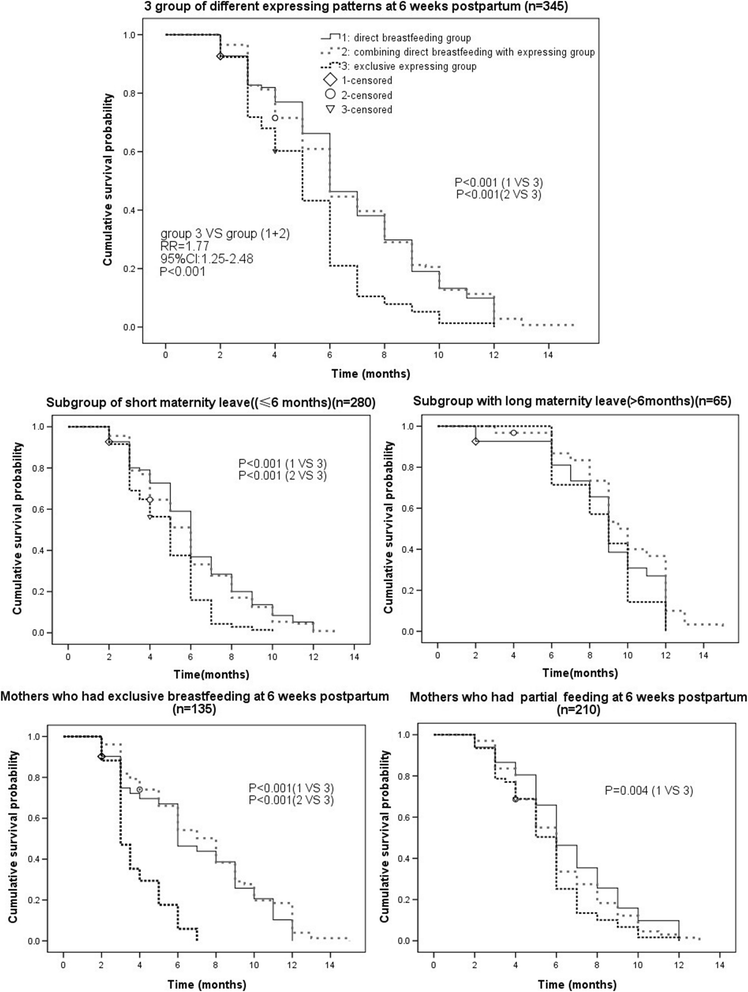Evaluation of the impact of breast milk expression in early postpartum period on breastfeeding duration: a prospective cohort study
- PMID: 26487378
- PMCID: PMC4618352
- DOI: 10.1186/s12884-015-0698-6
Evaluation of the impact of breast milk expression in early postpartum period on breastfeeding duration: a prospective cohort study
Abstract
Background: Breast milk expression (breast pumping) has become prevalent as an important dimension of breastfeeding behavior. It is, however, not clear whether increasing breast milk expression contributes to extend the duration of breastfeeding. The objective of the present study was to evaluate the impact of breast milk expression in early postpartum period on breastfeeding duration amongst mothers of healthy term infants.
Methods: A prospective cohort study had been conducted from March to June 2010. Mothers who gave birth to healthy, full-term and singleton babies were enrolled at discharge. These women were interviewed at 6 weeks postpartum about their breastfeeding behaviors. According to expressing patterns at 6 week postpartum, women were divided into three groups: direct breastfeeding (group 1), combining direct breastfeeding with expressing (group 2), exclusive expressing (group 3). The investigators followed up the women by telephone thereafter at a bimonthly basis and documented breastfeeding duration. Survival analysis was conducted to explore the association between expressing patterns at 6 weeks postpartum and breastfeeding duration. Associated factors of exclusive expressing at 6 weeks postpartum were characterized by logistic regression analysis.
Results: Four hundred one eligible women were enrolled at discharge. Among the 389 women who attended the face-to-face interview at 6 weeks postpartum, 345 women continued breastfeeding. They were divided into 3 groups by their expressing patterns. According to survival analysis, women who exclusively expressed breast milk at 6 months postpartum (group 3) were 1.77 times as likely to stop breastfeeding as those who did not (group 1 and 2) (95% confidence interval: 1.25-2.48; P <0.001). There is, however, no significant difference of breastfeeding duration between group 1 and group 2. Subgroup analysis showed that exclusive expressing women who were exclusively breastfeeding at 6 weeks postpartum had the shortest breastfeeding duration. Mother's high education level, short maternity leave, breast milk expression in hospital and bottle-feeding in hospital were associated factors to exclusive expressing at 6 weeks postpartum.
Conclusions: Exclusive expressing in the early postpartum period may not help women to achieve long-term breastfeeding duration, especially in women who were exclusively breastfeeding.
Figures




References
MeSH terms
LinkOut - more resources
Full Text Sources
Other Literature Sources
Medical

